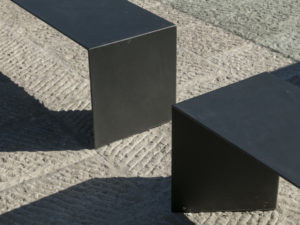Project Description
The story of Museum of Fire started when we were asked to design an exhibition pavilion to promote the city of Żory and to showcase its offerings to newcomers, tourists, partners and investors.
The pavilion was to be situated prominently on an exposed site near the main access road to the city. The plot had a lot of disadvantages, especially numerous underground infrastructures that left only a very strange, irregularly shaped piece of land to build on. For a long time we could not come up with a suitable solution. We repeatedly studied the brief, looking for the crucial factor and main idea that would define the design.
The name of the city – Żory – means “fire”, ”burnt”, “flames”. In the 12th century, when Żory was founded, forest was burnt in order to open up space for the new city. This tradition is still alive – there is a Festival of Fire in summer, and the logo of the city is a small flame. It became obvious to us that the building should look like a fire. The strange shape of the plot suddenly started to resemble dancing flames. The idea started to crystallise.
The building consists of three independent walls that “swim” next to each other. Their composition and shapes, covered with copper plates, resemble dancing flames. The copper is covered with an HDP layer to avoid patina and maintain a fiery appearance. Spaces between the walls are fully glazed, forming entrances to the pavilion. The walls are made of architectural concrete, covered on the outside with copper and left untouched inside. The floor is paved with black stone, which is continued into the outdoor space.
During the construction, when the ground was excavated, our client proposed using the underground space for a big exhibition hall. This sparked the idea of the whole building as a Museum of Fire.
The building has three entrances. There is a multifunctional hall and reception/information on the ground floor and an exhibition hall underground with a multimedia show and exhibits devoted to the phenomenon of fire. It is completed by sanitary facilities and technical rooms.
Intensive landscaping surrounds the museum. The building and the landscape work together to create a spatial symbiosis consisting of the museum itself, pedestrian paths running through the pavilion and green walkways. A Garden of Fire is envisaged – an outdoor exhibition space along the country road that will be used during the Festival of Fire.


































